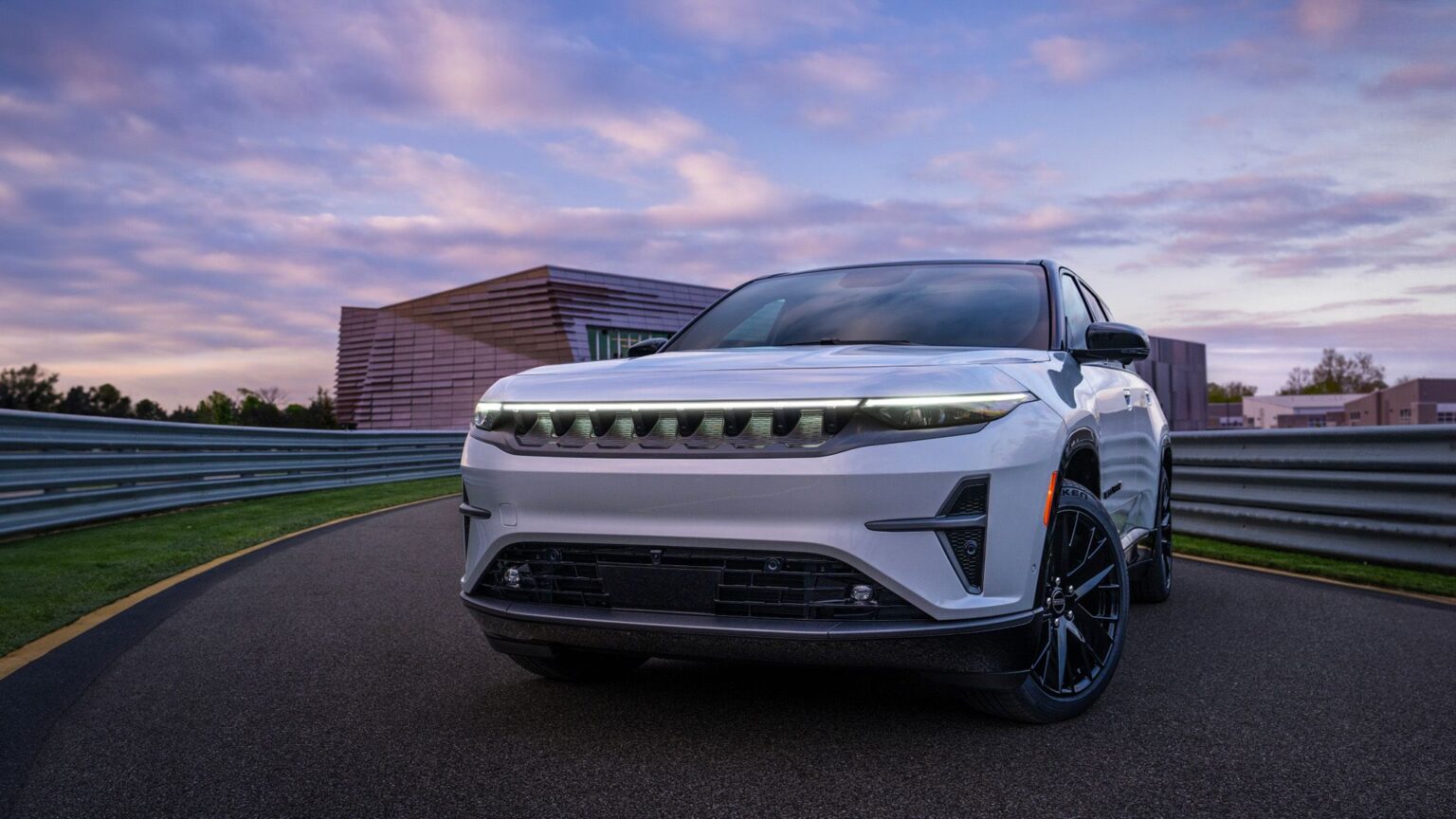Jeep will be expanding its electric vehicle lineup to include extended-range EVs, or EVs with range-extending internal combustion-powered auxiliary engines, Bob Broderdorf, Head of Jeep Brand North America, exclusively told us in a recent interview at the Los Angeles Auto Show. I sat down to catch up with Broderdorf for a sit-rep about how things are going at the famed truck and SUV manufacturer as 2024 comes to a close in just a few short weeks. And in that interview, Broderdorf confirmed that we can expect to see some new developments with EREV, or Extended-Range Electric Vehicles, in the near future, as a follow-up to the reveal and upcoming launch of its first battery-electric vehicle (BEV), the Wagoneer S.
Automakers as of late have been reworking their near-future product strategies as their bets on electric vehicles taking off like hot cakes amid impending governmental mandates for zero-emissions new vehicle sales haven’t been panning out. Adding to the effect of slow EV sales is the fact that buyers are still concerned about driving range and range anxiety, inconsistent and inconvenient charging infrastructure, and high costs of entry. But while others backtracked hard on their EV initiatives by refocusing their investments in ICE and gas-electric hybrid technology, Jeep is staying steady with its electrification efforts while taking another look at range-extended battery electric vehicles, to help alleviate one of the biggest concerns about EVs, range and range anxiety. This coincides with Stellantis’ recent decision to continue investing in ICE tech while leveraging new electric vehicle tech, all to provide future customers with flexibility with choice, rather than forcing them to adopt EVs.
Jeep Seeks To Embrace Range-Extending Technology For New EV Lineup
As a refresher, EREVs, or Extended-Range Electric Vehicles, are battery-electric vehicles, like your everyday Tesla, Rivian, Lucid, Ford F-150 Lightning, et al, but with an onboard auxiliary motor powered by conventional gasoline. Electric motors powered by a massive battery pack still drive the wheels of an EREV, while the onboard auxiliary gas-powered engine has no role in driving the wheels. Instead, the auxiliary engine’s sole purpose is to act as an additional electricity generator and provide electricity on-the-go to recharge the battery pack. The result is longer driving distances and ranges, versus driving strictly off of the battery pack on a standard EV.
In the event of the battery pack of an EREV depleting, one can simply drive to a conventional gas station, fill up the tank that provides fuel for the auxiliary engine, and keep going on your merry way until you either get to your destination or your next opportunity to charge the battery pack. Not only do EREVs make living with an EV much easier, but they also alleviate any concern about running out of electricity and being marooned somewhere or waiting hours to recharge, unlike with traditional battery electric vehicles without a range extender, which require EV charging stations or access to an electric plug to recharge.
Some notable examples of EREVs in the past include the original Chevrolet Volt/Vauxhall Ampera, the Fisker Karma, and the original BMW i3.
“I think that it’s a great way to go about it. I think Ramcharger is set up for a tremendous amount of success. I think Jeep can leverage and those investments from Stellantis.”
“I think the technology is absolutely fantastic, I think it’s super interesting, and it’s a completely different way to address a market that doesn’t have the infrastructure,” Broderdorf replied when asked about the prospect of EREVs. “So our ability to bring that [extended-range electric vehicles] in, I think that’s something we will strongly consider as we go forward. You’ll probably see that from us in a number of areas. We’ve kind of hinted to that to different people.”
“I think that it’s a great way to go about it. I think Ramcharger is set up for a tremendous amount of success. I think Jeep can leverage and those investments from Stellantis,” Broderdorf continued, referring to the Ram 1500 Ramcharger, or the company’s full-size all-electric pickup truck that features a gasoline-powered range extender, and is another example of an EREV. Broderdorf’s mention of Ramcharger also suggested that Jeep could use the pickup’s extended-range EV powertrain technology for its own applications.
“Just wait until you drive it,” Broderdorf also mentioned, after noting that he sampled the Ramcharger internally. “I’m telling you, you’re gonna be impressed, to have all of that electrification performance, yet I can still throw gas into it, to power the generator, I don’t even have to charge, it still drives like an EV, and still get 690 miles of range on a truck, it’s absurd!”
Broderdorf didn’t go into further detail as to which models we can expect to see arrive as EREVs. But he further expressed his confidence that they’re the next step towards electrification for the Jeep portfolio, acknowledging that as trucks and SUVs, they’re already heavy vehicles simply because of their size and consruction and adding battery packs makes them even heavier, compromising performance and driving range. Therefore, the prospect of EREVs for Jeep makes sense for their electric models going forward in the near future, especially for those who use their Jeeps to explore the wilderness.
Read the full article here


